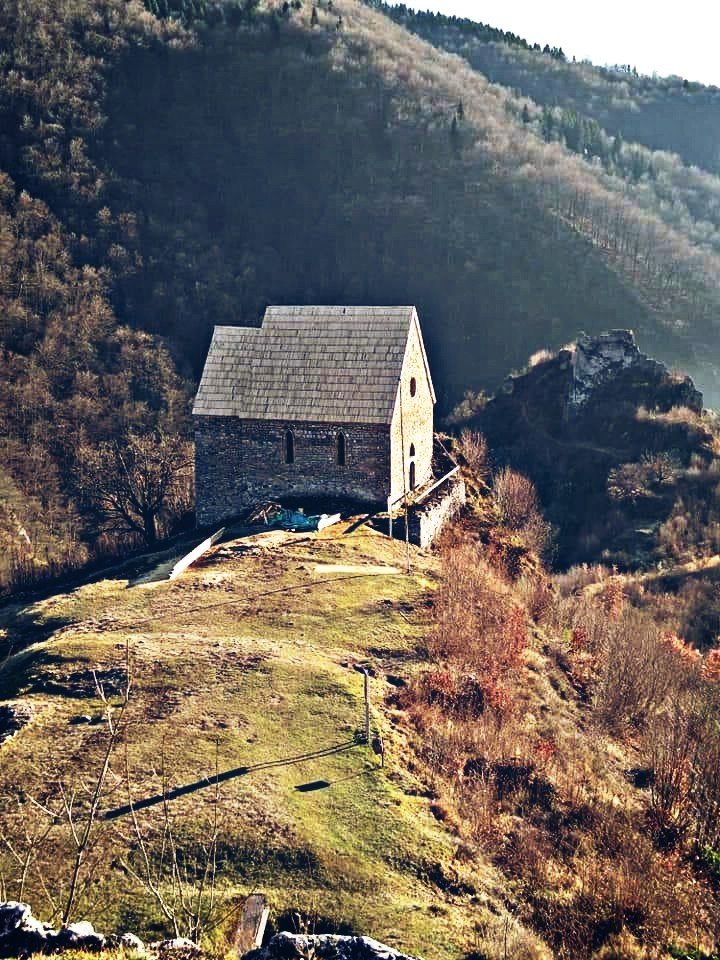Our first blog will be about one of the most beautiful and most important historical places in Bosnia and Herzegovina – Bobovac.
Over a 500-600-year period, as long as the medieval Bosnian state existed, the capital changed its place twice. Today it is well known that the first capital was located in the area of the Moštre village, a few kilometers away from Visoko.
When the attacks from foreign armies started to be more frequent in the late 12th and early 13th century, the capital in Visoko became insecure, since it was without adequate protection. That is the reason why the capital was transferred from there to the well-protected and inaccessible terrain of Bobovac, about ten kilometers northeast of Kraljeva Sutjeska. So, Bobovac became the capital of the Kingdom of Bosnia. It had a court, a throne, there was a crown, a treasury, an archive, and everything else that a medieval capital contained.

The city was surrounded by high ramparts whose total length was about 1100m and they were reinforced by 11 strong and beautiful towers. The most important tower in the defense system of Bobovac was called the defensive tower. It was located on the hill Vis, in the middle of the northern wall of the ramparts. It protected the access to the city from the north, where it was the most sensitive defensive point of Bobovac since there were no natural obstacles on that part of the complex. That is why the rampart on that side was extremely thick and high, reinforced with powerful towers.

The Bobovac complex consists of the following buildings: two palaces (upper and lower), auxiliary buildings to accommodate craftsmens’ workshops, granaries, and other objects, then there were horse stables, smithies, two water tanks, and several ancillary buildings for storage and service apartments, and then defensive structures consisting of the main tower, the observation tower, and the ramparts. Outside the palace complex, there was a mausoleum (royal tomb), next to it, on the south side a round tower, and on the north side a larger palace, across it an unidentified building, then a public cistern, square, defensive elements (ramparts, towers, etc.) and suburbs.
Given that Bobovac, both at home and abroad, was considered the key to the Kingdom of Bosnia, it played a very important role in the country’s history. Whoever tried to control Bosnia and its throne, tried to conquer Bobovac. It was also an important factor in civil wars. Bobovac experienced the most difficult days in the period from 1404 to 1410 during the throne struggles between King Ostoja and King Tvrtko II.

The participants in the Ottoman sultan’s campaign on Bosnia inform us about how the Turks captured Bobovac. Amongst other things this is what is said: when the sultan saw the walls of Bobovac and the position in which it stood, he realized that he could not occupy it with an assault or a siege. However, he did not want to give up, so he ordered heavy cannons to be fired and the city to be beaten from the surrounding heights. However, he did not need to continue with this tactic. Unexpectedly, after three days without a fight, the town was handed over to him by Duke Radak, the king’s commander of Bobovac. This was completely unexpected, and from a tactical-defensive point of view unnecessary because the city was so secured that it could withstand a siege for up to two years.
The reasons for Radak’s actions were not familiar at the moment. The main theory today is that he did it out of revenge against the king, because of the bloody persecution of the Bogomils. Namely, Radak was also a Bogumil, but in those persecutions, he forcibly became a Catholic, like many of his compatriots, so he thought that he would take the best revenge on the king in this way. So, in May 1463, the capital of the Bosnian kings and the capital of the Bosnian state fell into the Ottoman hands. This also meant the collapse of the Kingdom of Bosnia and the end of the medieval Bosnian state.
Visit our social media profiles as well:
